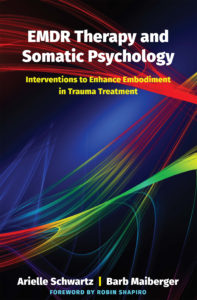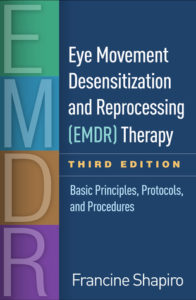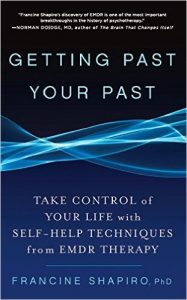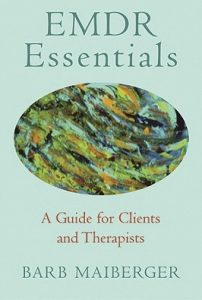The following is an excerpt from Barb Maiberger’s book, “Remote Together: A Therapist’s Guide to Cultivating a Sustainable Practice” (Copyright © 2021)
Technological devices can be excellent tools that help people connect as well as feel validated and supported when they may otherwise feel alone, isolated, and abandoned. Using technology can have beautiful benefits, such as connecting with people; however, it can also create trauma on a personal and global level, such as seeing horrific images or words transmitted through social media, emails, texts, or the news. This use of technology can create secondary trauma, which I call “remote traumatization.” On a personal level, remote traumatization occurs when one person targets another through bullying, manipulating, harassing, or terrorizing. Examples of this harm include cyberbullying, cyberstalking, revenge porn, S.W.A.T.‑ting, ransomware, trolling, and catfishing.
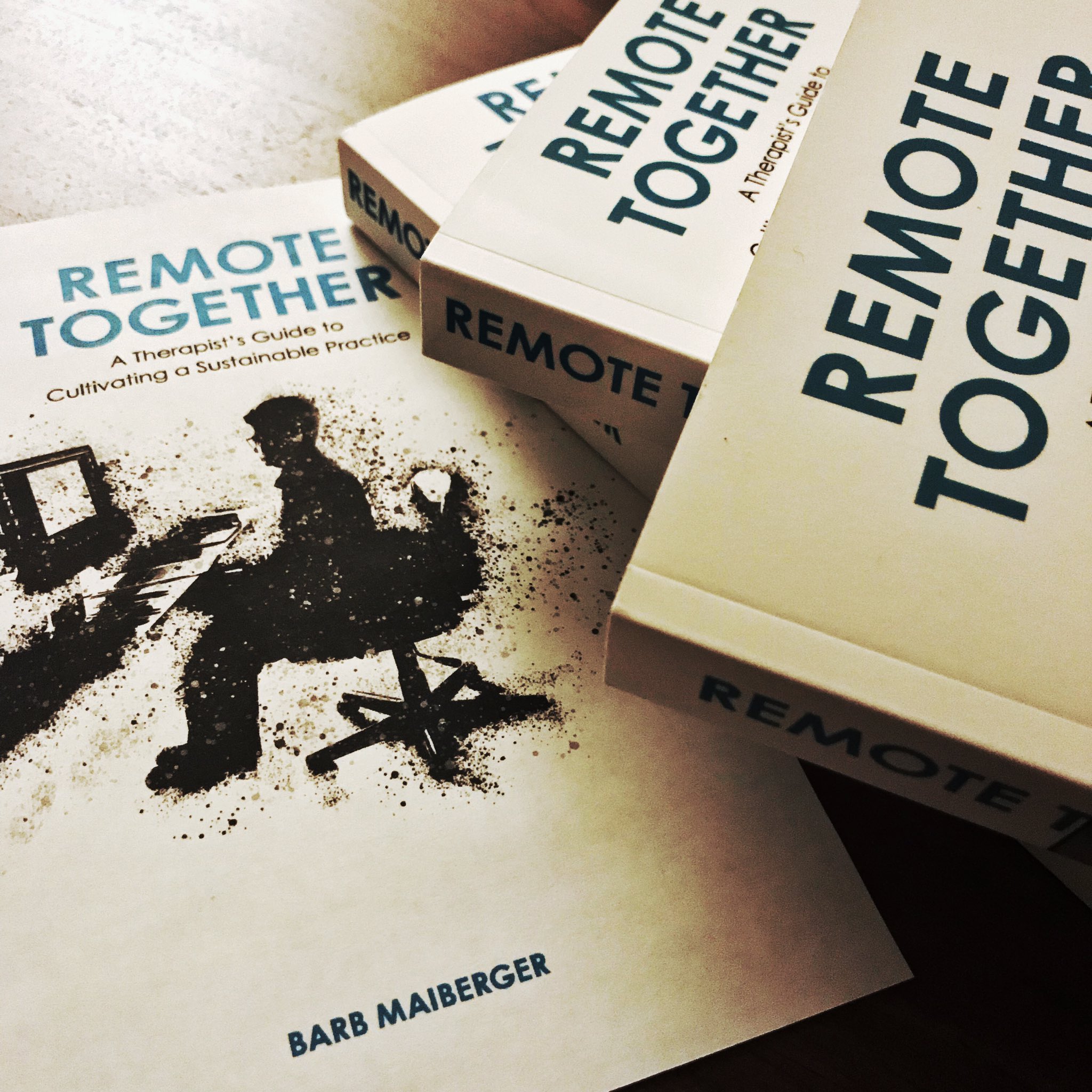 Global remote traumatization happens on a massive level, when violent images and words are spread across the world instantaneously, hurting people of different races, genders, and cultures. The process of sharing violent content is instantaneous, persistent, and available 24 hours a day. When I was growing up, there were only three news channels and one newspaper in my town. We had to wait to find out what was happening in our community and our nation. Now, we no longer have to wait to find out what is going on around the globe. Everyone is creating the news, making news, and impacting the news, whether it’s “real” or “fake,” which can profoundly affect a nation’s people with just a single swipe of a finger, traumatizing them for years to come.
Global remote traumatization happens on a massive level, when violent images and words are spread across the world instantaneously, hurting people of different races, genders, and cultures. The process of sharing violent content is instantaneous, persistent, and available 24 hours a day. When I was growing up, there were only three news channels and one newspaper in my town. We had to wait to find out what was happening in our community and our nation. Now, we no longer have to wait to find out what is going on around the globe. Everyone is creating the news, making news, and impacting the news, whether it’s “real” or “fake,” which can profoundly affect a nation’s people with just a single swipe of a finger, traumatizing them for years to come.
During the pandemic, remote traumatization was rampant with violent images and words bombarding people every day. Images of elders separated and isolated from their families. Empty store shelves from people hoarding products out of fear there wouldn’t be enough for them. Death tolls rising from COVID‑19 with no vaccine in sight. Devastating videos of racism showing people being injured, shot, and killed in plain sight. Images of children being held in overcrowded facilities, separated from their parents while trying to enter the United States. People storming the Capital and threatening to overtake the election. These examples are merely a snapshot of what was spreading worldwide, just like a deadly virus. These powerful images tap into the fear and anxiety that destabilize people’s nervous systems and cause debilitating post-traumatic stress disorder (PTSD) symptoms, including nightmares, flashbacks, sleep issues, disorientation, hyper‑vigilance, social isolation, and even suicide.
As I dealt with adjusting to the new abnormal during the pandemic, my husband, Young, experienced remote traumatization firsthand. Images were posted on social media of Asians around the world being spit on, yelled at, bullied, harassed, violently beaten, and killed. As he watched these horrific images, his body responded by becoming stiff and rigid, he lost his ability to speak, and he has feared for his own life since. Young had been experiencing similar events himself since the pandemic began, which also made him recall his own pre‑pandemic trauma. He watched these shared videos to validate that what he was experiencing was real and not imagined. Unfortunately, this also traumatized him at the same time, triggering his own debilitating and exhausting experiences with anti-Asian racism throughout his life. As a result, Young developed PTSD symptoms of terrifying nightmares and intrusive thoughts that made it difficult for him to concentrate. He avoided everyday activities that he felt were dangerous, which included going to the grocery store or even taking a walk with me in our neighborhood. His unresolved childhood traumas began to surface, mixing and matching with the cultural context of what he was experiencing in the present, making it hard for him to feel safe, grounded, and able to make good decisions in the present moment.
As I watched my husband suffer, feeling alone, isolated, and helpless, I struggled with how I could help him through such pain. White privilege allows me to move about my community without fearing for my life, feeling relatively safe even while wearing a mask. On the other hand, Young has experienced people accusing him of being responsible for the spread of COVID‑19 and yelling at him out of disgust and hatred to “go back to your own country.” People in our own community recorded him, following him around in stores or to his car while he minded his own business. Young felt afraid, anxious, and fearful that something terrible would happen to him, so he isolated himself in our home. He was lost, trying to make sense of something that he couldn’t comprehend. Were these people trying to make a viral moment to become famous, or trying to incite a racial incident so that the police would come and arrest him, or were they hoping that they could be a hero and protect others from this “dangerous foreigner?” These questions haunted him and fueled his fear, making it difficult for him to trust the world—and our own block—as being safe enough for him to move freely. Even though we’re married and living under the same roof, our experiences in our community, nation, and the world are entirely different every moment, every day of every year.
As Young sought validation that he was not alone in his encounters, he turned to social media to see if others were experiencing the same thing. His therapist suggested we watch these videos together so that Young had more support through this process and so that I could better understand what he was going through as an Asian American living in a predominantly non‑Asian community. While I love supporting my husband in the ways he needs, this request to watch videos of violence against other human beings was (and continues to be) challenging for me. It was (and is) traumatizing for me to watch these kinds of videos with my husband, especially since I listen to therapists sharing cases of trauma every day, which can take a toll on me mentally, emotionally, and spiritually. As I see these painful images, I feel the bile rise in my throat, have the urge to throw the phone across the room, and want to scream out loud for the injustice I witnessed. I feel the pain so deeply that it hurts my soul, interrupts my sleep, and makes me cynical about the human race.
While I have the privilege of choosing when and how I watch these videos to protect myself, Young does not have that kind of privilege. His body holds the pain of racism 24 hours a day, which sometimes exhausts his nervous system beyond his capacity. Young has no escape. He has the challenge of living in a reality where his world is not safe, and he must find ways to empower himself even when the world tries to take that power away. Our sense of the world is quite different: intolerable for him to experience and impossible for me to comprehend.
As we both try to navigate how we interact with these images in order to process what we see, there is no good answer on the best way to handle this situation. Our dilemma: How do we watch this kind of violence to be conscious of what’s happening in our community and nation and still know how to take care of ourselves? Without witnessing this material, it’s easy to be ignorant of others’ pain and suffering, remain unaware of biases, and avoid seeing the truth of what’s happening. On the other hand, without creating safety to view this material, we both become traumatized in the process, exhausting our nervous systems and adding to our senses of remote fatigue.
One thing that has helped us through this process is to set a boundary between when and how we view these videos. We try to set up time in the middle of the day to watch, which allows us to digest, discuss, and process the violence we’ve just witnessed. We have found that when we keep this boundary, we can connect more fully, have time to process the despair in our hearts and souls, and provide each other the space to let our love be the guiding force. Providing a clear boundary gives us the safety we both need to share in this process by providing consent and context for what we’re witnessing.
Although this is only one example of someone experiencing remote traumatization, there are billions of people interacting on social media, sending/receiving emails, and watching the news every second of every day. If you find yourself saying, “I don’t want to look at my phone or watch TV anymore,” that may be a clear sign you’re experiencing remote traumatization. It’s a signal to yourself that you’re trying to avoid the pain from the violence you witness through technology. The potential for you to experience trauma from using phones, tablets, computers, and televisions is very high, especially if you’re already suffering from unresolved trauma. As you see violence on social media, in emails, and in the news, it’s necessary to have a safe place to discuss, explore, and process what you are witnessing. While it’s essential to be aware of what’s happening in your community, country, and the world, be mindful of how it impacts you. Don’t ignore the signs of distress in your bodymind.
Without conscious attention given to this material and a safe avenue to express how it impacts you, remote traumatization can begin to undermine your sense of seeing the “good” in people, thus making it difficult to hold a positive light when working with your clients. Over time, you may start to feel cynical, hatred, and even disgust for other human beings, ultimately impacting your ability to hold a safe place for your clients to express what they’re experiencing. If you try to handle all of this on your own, you may take on too much responsibility for your clients, potentially trying to rescue them from their pain, or sacrificing your own needs by making your clients’ traumas more significant than your own. All of this may lead you to feel inadequate and helpless, impacting your self‑esteem as a therapist and exhausting your nervous system. Remote traumatization is real and may explain why there can be resistance from both therapists and clients to do therapy remotely. Just the act of turning on a device can trigger the association of trauma unconsciously. The key is that we have to be careful using technology safely and begin seeing positive associations with technology. Remote therapy can counterbalance the harmful effects of remote traumatization by offering hope, healing, and transformation.
If you find yourself over‑giving, challenged to remain centered, and unable to ground in your body due to remote traumatization, you may end up extremely exhausted, tapped out with nothing left to give to yourself or your clients. Seeking support in consultation, supervision, or your own therapy can help you navigate the damaging effects of experiencing remote traumatization.
Be aware that as much exposure you experience with social media, emails, texts, and the news, your clients are going through the same thing. Take time to ask your clients questions about this topic and see how it impacts them mentally, emotionally, physically, and spiritually. You might be surprised how much they are being traumatized and they may not have the words to share it with you. Look for signs of PTSD and help your clients find safety in how they view traumatizing material and help them find better ways to take care of themselves.
Read “Remote Together”Excerpted from “Remote Together: A Therapist’s Guide to Cultivating a Sustainable Practice” by Barb Maiberger (Copyright © 2021)
About Barb Maiberger, MA, LPC
 Barb Maiberger, MA, LPC is the founder of the Maiberger Institute, and the author of “Remote Together: A Therapist’s Guide to Cultivating a Sustainable Practice,” “EMDR Essentials: A Guide for Clients and Therapists and the co-author of “EMDR Therapy and Somatic Psychology: Interventions to Enhance Embodiment in Trauma Treatment.” Barb Maiberger is an EMDR Trainer and Consultant, and is the CE Program Administrator for the Maiberger Institute. She is a Licensed Professional Counselor in the State of Colorado and has a Masters degree in Somatic Psychology. Barb has personally conducted over a hundred EMDR Training programs. Barb’s knowledge, experience, keen sense of empathy, and a strong presence have motivated over a thousand therapists to incorporate EMDR Therapy into their practices.
Barb Maiberger, MA, LPC is the founder of the Maiberger Institute, and the author of “Remote Together: A Therapist’s Guide to Cultivating a Sustainable Practice,” “EMDR Essentials: A Guide for Clients and Therapists and the co-author of “EMDR Therapy and Somatic Psychology: Interventions to Enhance Embodiment in Trauma Treatment.” Barb Maiberger is an EMDR Trainer and Consultant, and is the CE Program Administrator for the Maiberger Institute. She is a Licensed Professional Counselor in the State of Colorado and has a Masters degree in Somatic Psychology. Barb has personally conducted over a hundred EMDR Training programs. Barb’s knowledge, experience, keen sense of empathy, and a strong presence have motivated over a thousand therapists to incorporate EMDR Therapy into their practices.
Learn More About Barb Read “Remote Together”
“Remote Together: A Therapist’s Guide to Cultivating a Sustainable Practice”
by Barb Maiberger
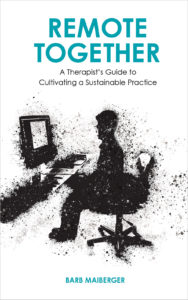 The pandemic has changed the field of psychology forever—and likely changed you in the process. One of the biggest changes is the emergence of remote therapy. If you are not currently offering it, your clients will probably ask you to incorporate remote sessions into your practice; it’s here to stay for us all. In Remote Together: A Therapist’s Guide to Cultivating a Sustainable Practice, Barb Maiberger shares her personal experiences as well as her extensive consultation work to help therapists create or refine a sustainable remote therapy practice. In a captivating mix of memoir and practical, hands-on advice, Maiberger shows the more prepared you are to offer remote therapy, the better experience you and your clients will have for years to come. She also provides daily practices to help you connect, be present, and create safety during remote therapy. Through these practices you’ll see that you’re not alone in your journey and, though remote, you can find support, nourishment, and enjoyment in your remote therapy practice.
The pandemic has changed the field of psychology forever—and likely changed you in the process. One of the biggest changes is the emergence of remote therapy. If you are not currently offering it, your clients will probably ask you to incorporate remote sessions into your practice; it’s here to stay for us all. In Remote Together: A Therapist’s Guide to Cultivating a Sustainable Practice, Barb Maiberger shares her personal experiences as well as her extensive consultation work to help therapists create or refine a sustainable remote therapy practice. In a captivating mix of memoir and practical, hands-on advice, Maiberger shows the more prepared you are to offer remote therapy, the better experience you and your clients will have for years to come. She also provides daily practices to help you connect, be present, and create safety during remote therapy. Through these practices you’ll see that you’re not alone in your journey and, though remote, you can find support, nourishment, and enjoyment in your remote therapy practice.
Learn EMDR Therapy to Help Heal PTSD and Trauma
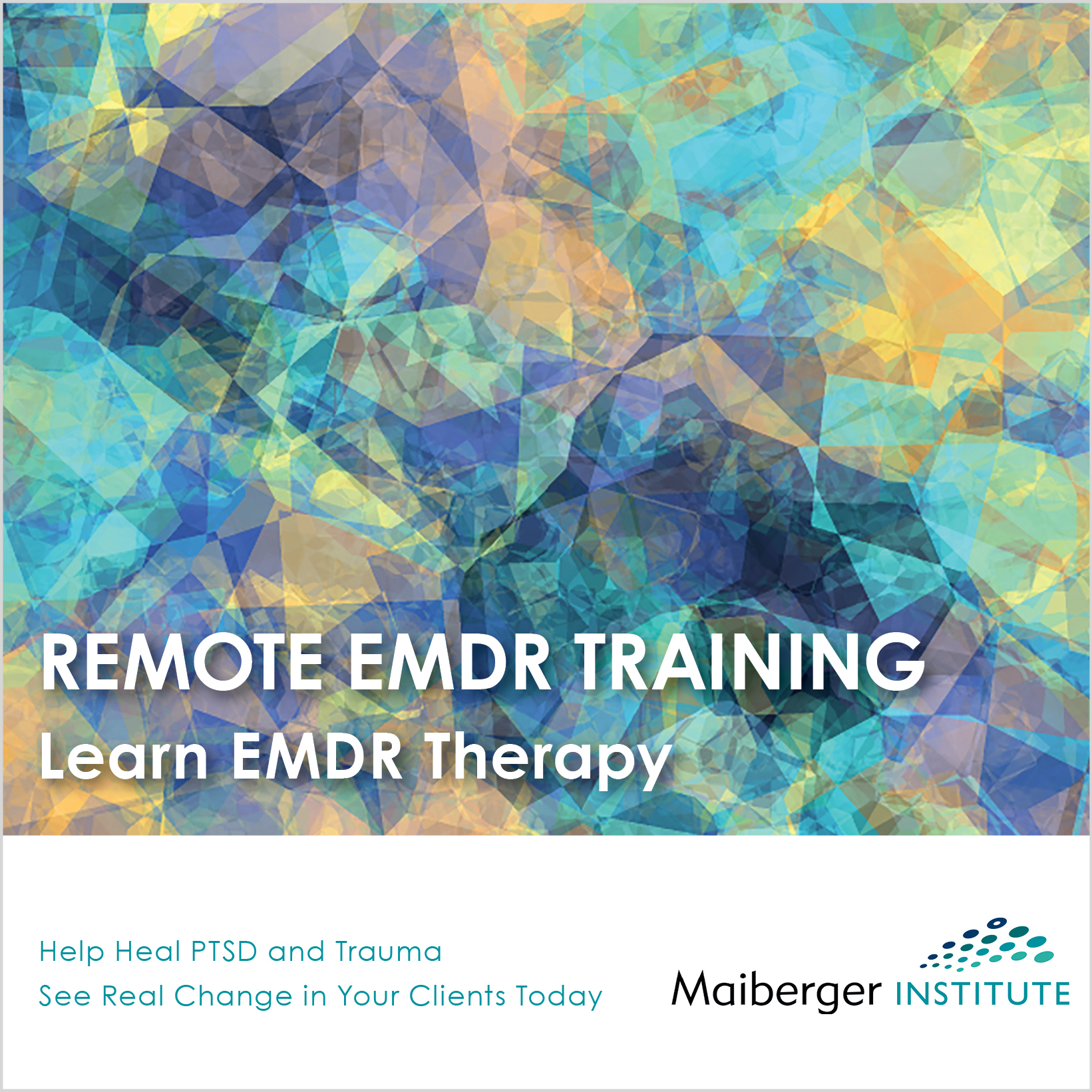 As clients struggle with not making the changes they are longing for in therapy, many therapists become frustrated and feel helpless that they are lacking the skills to help their clients make lasting change and transformation. If therapists only pay attention to what the client is saying, and the client is struggling to make lasting change, then something is missing in the therapeutic process. The solution may be a somatic approach to healing trauma using EMDR therapy.
As clients struggle with not making the changes they are longing for in therapy, many therapists become frustrated and feel helpless that they are lacking the skills to help their clients make lasting change and transformation. If therapists only pay attention to what the client is saying, and the client is struggling to make lasting change, then something is missing in the therapeutic process. The solution may be a somatic approach to healing trauma using EMDR therapy.
This evidenced based, integrative modality, is a recommended treatment of choice by several international mental health organizations for healing PTSD and trauma. Millions of people around the world have transformed the negative impact experienced from traumatic events into more adaptive ways of living by increasing their confidence, sense of joy and feeling more at peace. Real change is possible!
Learn More About Remote EMDR Training
Remote EMDR Therapy Resources:
- 8 Phases of Remote EMDR Therapy
- Learn Remote EMDR Therapy
- Self-Care Books for Therapists
- EMDR Therapy Books
- “Remote: Office Not Required” by Jason Fried and David Heinemeier Hansson
- Colorado DORA Update Regarding Teletherapy
- Colorado General Assembly Regarding Telepsychology
- Colorado Counseling Association Regarding Teletherapy
- Other EMDR Therapy Resources
Related EMDR Therapy Books
Maiberger Institute participates in the Amazon Services LLC Associates Program, an affiliate advertising program designed to provide a means for sites to earn commissions by linking to Amazon. This means that whenever you purchase on Amazon from a link on this website, we receive a tiny percentage of its price. Privacy policy.
Cover Photo Image by Young B. Kim ~ Copyright © 2021






